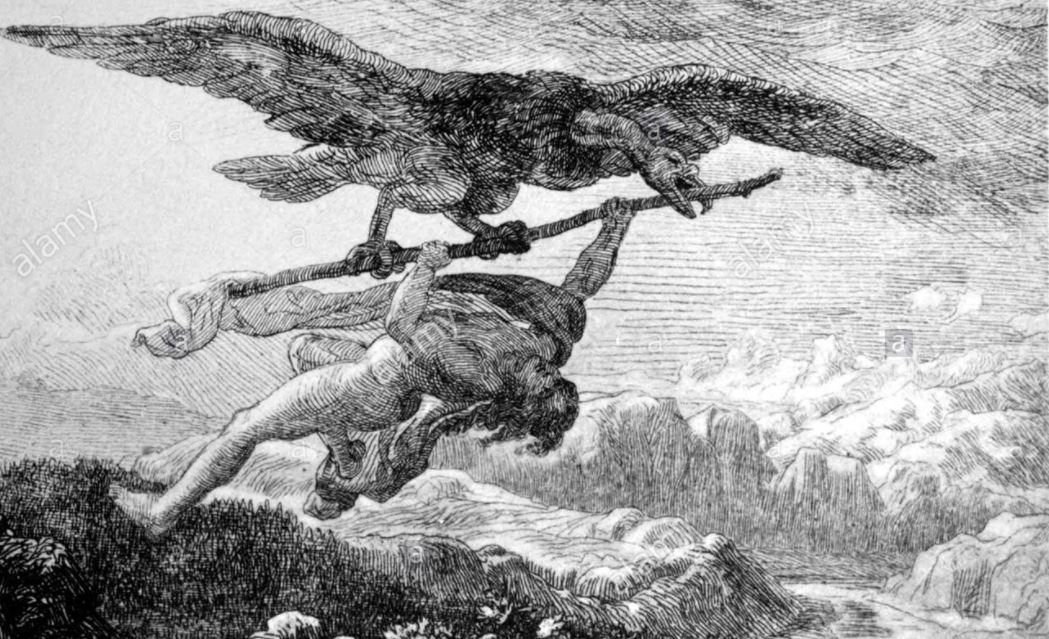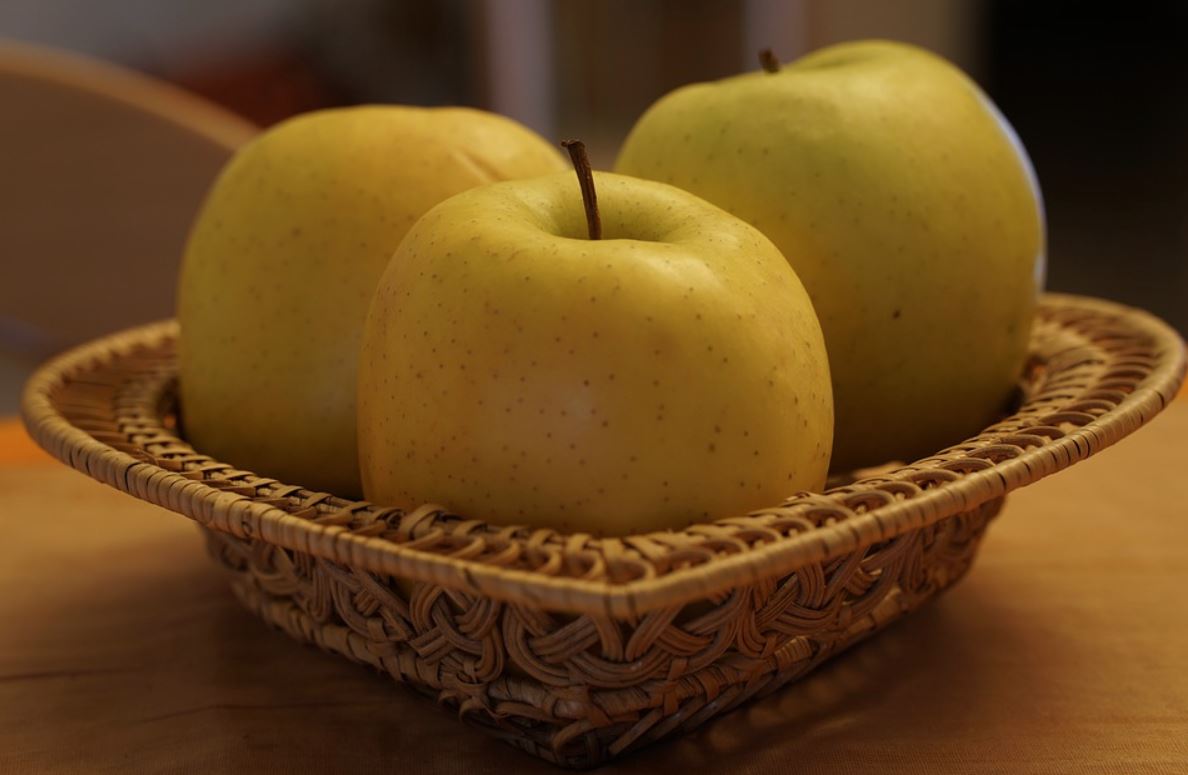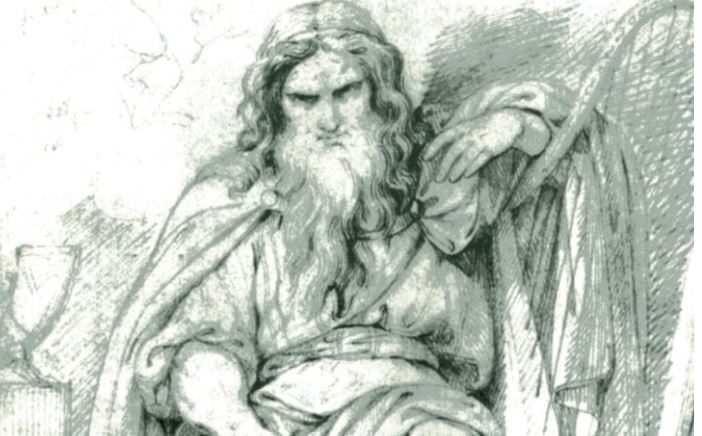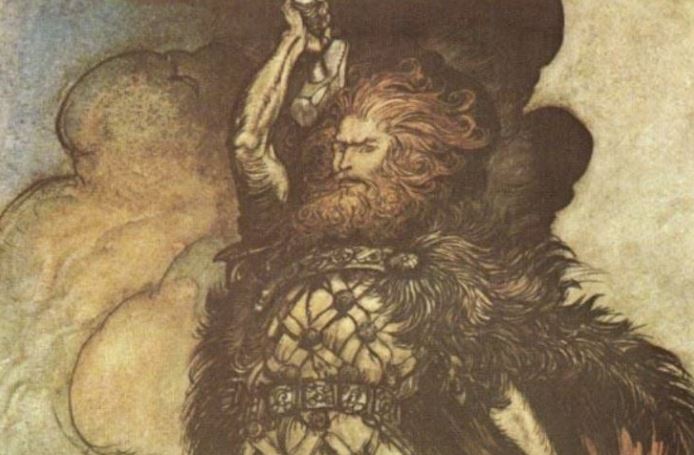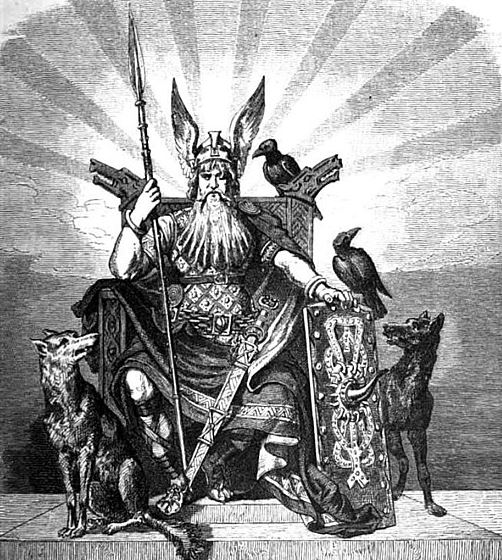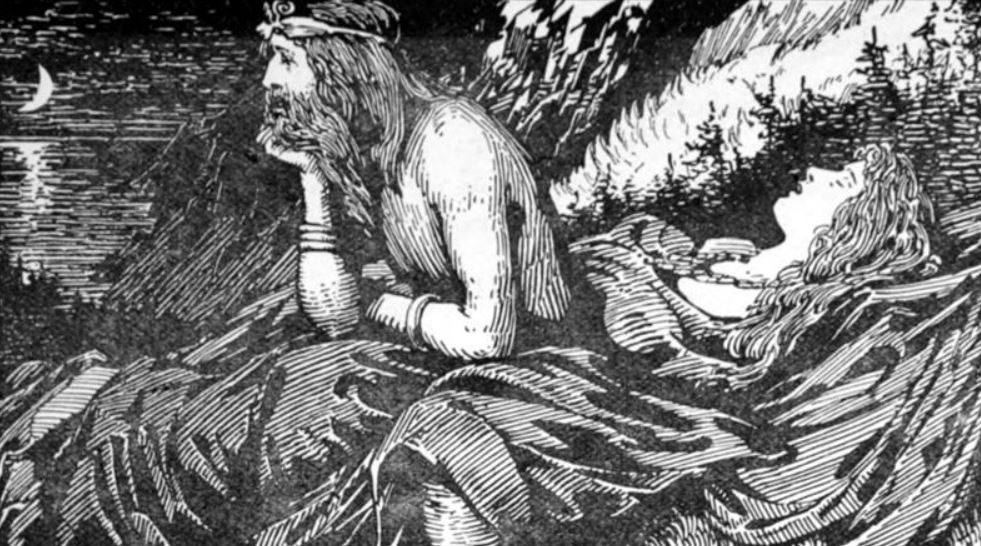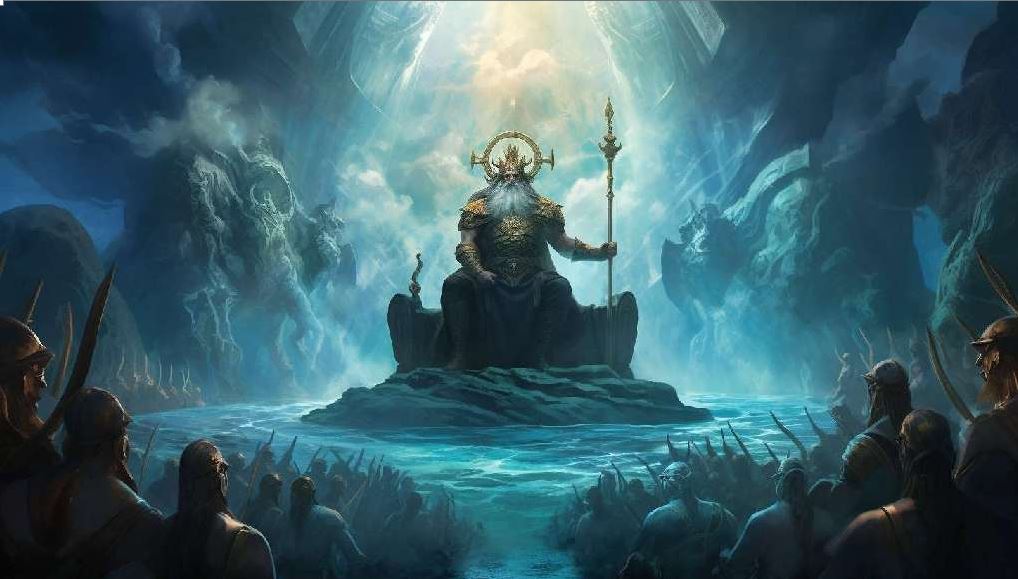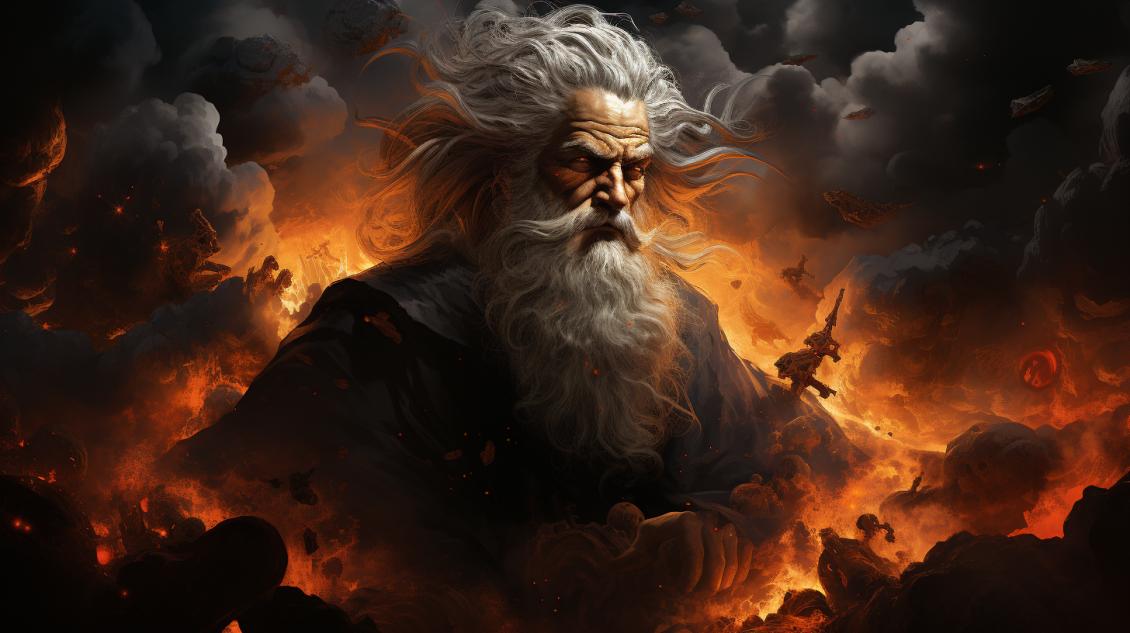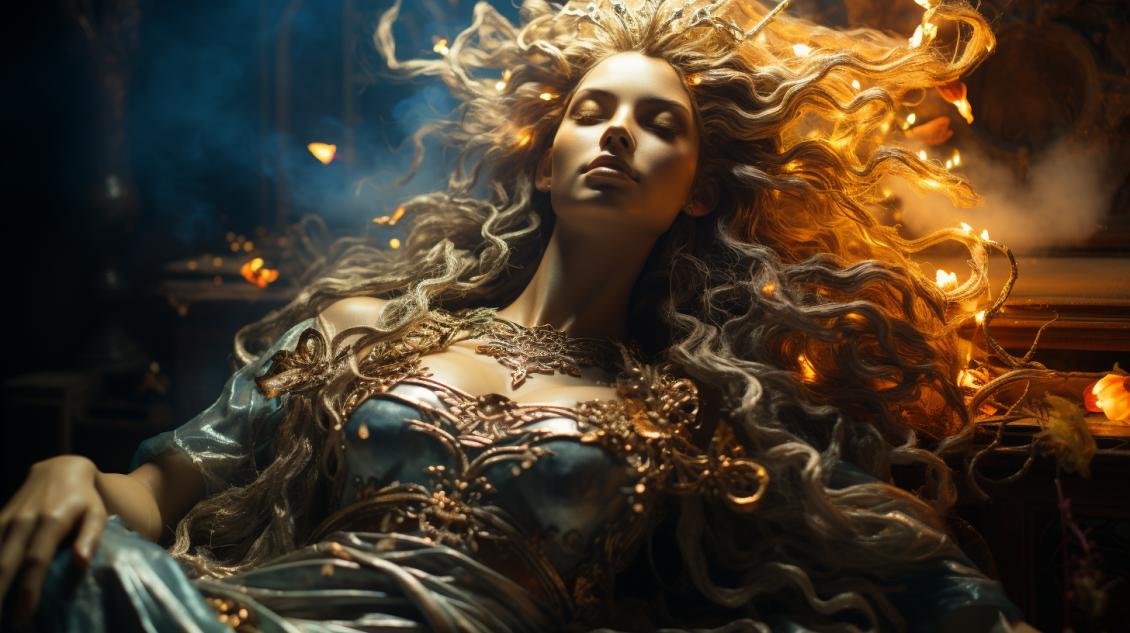Norse Goddess Idun and Her Golden Apples

In Norse mythology, Idun, the goddess of Spring and rejuvenation, was responsible for watching over the apples of immortality.
Belonging to the Aesir tribe, the Norse goddess Idun was quite relevant and respected because, without the apples she possessed, the gods would not be able to maintain their immortality.
Her power over the immortal bearing epli, which was the Old Norse word for “apple” or “nut,” made Idun and her golden apples an essential goddess in Asgard. Bragi, the Norse god of poetry, was her husband.
Norse goddess Idun: Origin of Her Name
In Old Norse, the language of the Vikings, the Norse goddess Idun translates to “The Rejuvenator” or “The Rejuvenating One.”
Unfortunately, as with most Norse mythology that had oral traditions, a great deal of information has been lost over time.
Norse goddess Idun and her golden apples
History of Idun goddess of youth
Idun was an enchanting Nordic goddess best known for her fruit that magically granted those who ate it the powers of immortality, eternal youth, and fertility.
The rejuvenator shared her power of immortality with the other Norse gods and goddesses of Asgard.
Legend said that she carried her apples in an eski, which is a box made from ashes. Married to Bragi, the famous Skald in Norse mythology, the tale of the Norse goddess Idun’s abduction is still one of the most popular myths in Norse history.
Bragi and Idun Norse Mythology
Myths of Idun in Norse Mythology
The most popular and well-known legend of Idun is a Skaldic poem, found within the Prose Edda.
The Nordic myth of The Kidnapping of Idun, emphasizes the importance of the Norse goddess Idun’s responsibility of dispersing the fruits that keep the gods and goddesses immortal.
The story begins with Odin, Loki, and Hoenir, three Aesir gods, traveling through mountains far from their home in Asgard.
The environment was harsh with limited food and inclement weather and torturous terrain. When the gods found a herd of oxen, without a second thought, they killed one for dinner.
Mysteriously, the ox would not cook over the open flame, confusing all three of the gods. Suddenly, a voice from the sky spoke to them.
Upon looking up, the group saw an eagle and heard him say that it was his magic that would not allow the meat to cook and offered to recant the spell if the gods would let him eat his fill.
The gods were irritated but reluctantly agreed to the terms. The eagle swooped down and ripped apart the best part of the ox.
Loki becomes angry, picks up a branch, and attacks the eagle. However, the eagle steals the branch from Loki with his powerful talons.
Loki does not let go of the branch and is sent flying across the sky. As Loki begs for his release, the eagle refuses and reveals that he is Thjazi the giant disguised as an eagle.
Loki and the giant Thjazi
The giant only agreed to release Loki if he would swear to an oath to deliver Idun and her golden apples to him.
The three gods finally made their way back to Asgard, Loki, the Norse god famous for his trickery, sought out the Norse goddess Idun to share that he had found better fruits just outside the Asgard walls and they should go to compare her immortal apples.
A picture of the Norse goddess Idun and Loki
Idun believed his lies and when they were past the walls of Asgard, she was enslaved by the eagle Thjazi and taken to Thrymheim, his giant “Thunder-Home” located high in the mountains.
Without Idun and her golden apples, the Norse gods and goddesses began to age. Their beauty faded away and they were left grey, weak, and wrinkled.
They gathered and upon discussing the missing Norse goddess Idun, it was realized that she was last seen leaving Asgard with Loki. The gods and goddesses worked together to capture Loki and threatened his life for the whereabouts of Idun.
After Loki revealed what he had done, the gods and goddesses allowed him to rescue the Norse goddess Idun from Thjazi before being punished by his death.
Freyja shared her hawk feathers with Loki, which held the power of shapeshifting into a hawk. Loki flew to Thrymheim to find the Norse goddess Idun alone as Thjazi had gone fishing. Loki transformed the goddess of youth into a nut and soared away with ease.
When Thjazi returned home to find the Norse goddess Idun missing, he turned into an eagle and went to find Loki. Almost back in Asgard, Thjazi was catching up to Loki and Idun, but with the help of his fellow gods and goddesses, they made it across the walls safely.
The gods and goddesses built a fire and lit it just as Loki crossed over leaving it to burst into flames, engulfing the giant eagle.
Another Old Norse legend tells the story of Loki claiming that Idun had slept with her brother’s murderer.
Unfortunately, this tale has been cut short because no other details have withstood the test of time.
Oral traditions from generation to generation left many legends to become lost in translation from oral to written history, causing inevitable gaps in research.
Norse goddess Idun powers
Idun was known for possessing the power to bestow immortality, fertility, and forever youthfulness. Her fruit, the golden apple, also known as epli, has the power to gift youthfulness and make even the gods and goddesses immortals, establishing her as an incredibly powerful figure to Norse mythology.
She could rejuvenate anyone feeling the weight of time. Knowing the vanity of most gods and goddesses, the power Idun held was in the golden apples gifting immortality.
The main symbol of the Viking goddess Idun: The apples
Without Idun and her golden apples, the aging process would plague all of the beautiful rulers of Asgard.
Norse goddess Idun symbols and their Meanings
The Norse goddess Idun is also believed to mean “The Young One,” which is a symbol of her youthful appearance and beautiful nature.
Idun’s box made of ashes, eski, to carry her immortal fruit is a symbol of her power for youth, rejuvenation, Spring, and fertility.
She can also be represented with orchards, fruit trees, and seeds in some Nordic legends. Specifically referring to Norse mythology, any symbols related to fertility and Spring, such as spring blossoms, seeds, and nuts like hazelnuts, often represent Idun.
However, the Norse goddess referred to as “The Rejuvenator” was most commonly associated with golden apples referring to the power of her immortal fruits.


